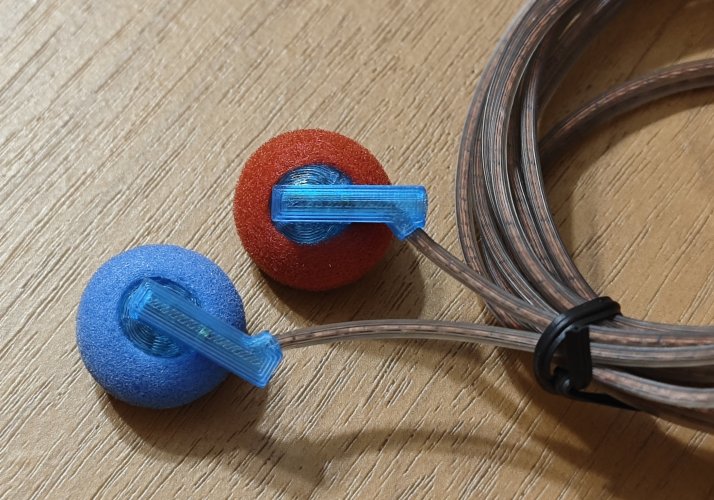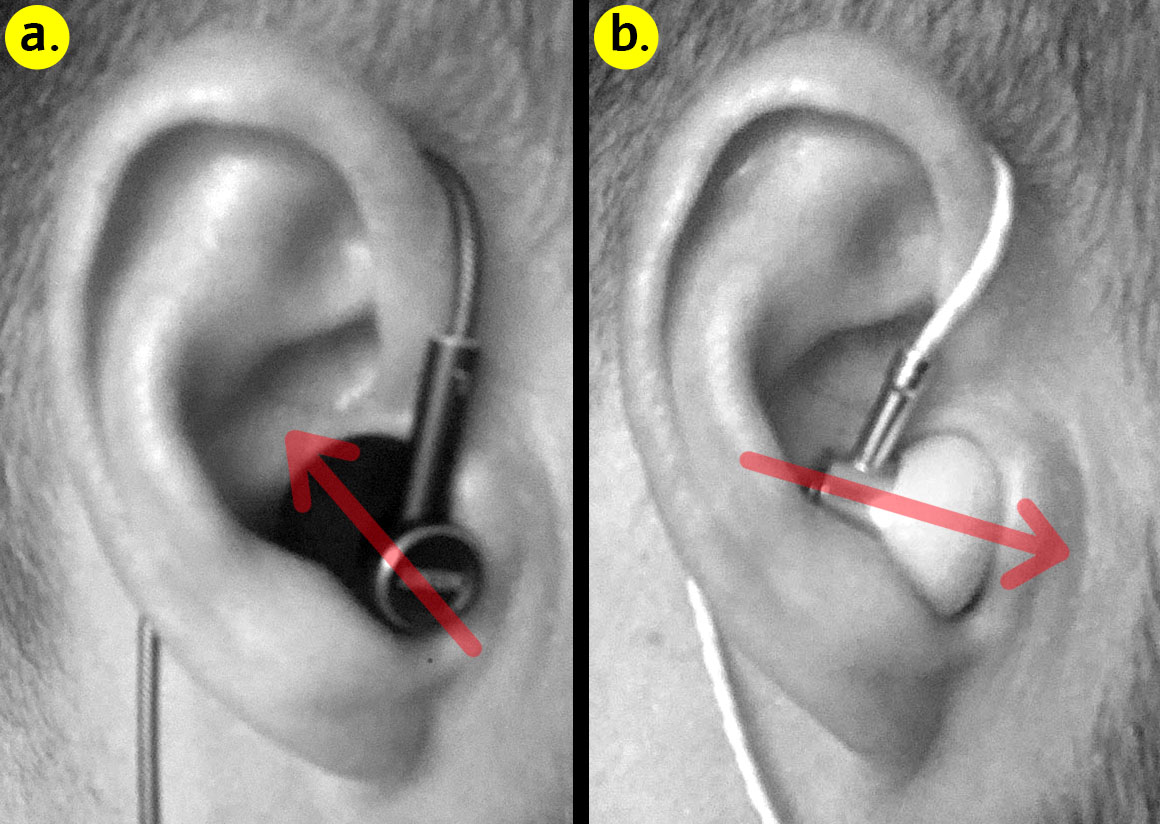iMM-6 coupler: re-design #4
This little experiment shows how much the curvature of the ear canal affects the change of frequency response relative to the standard cylindrical coupler
 (1.)
(1.) This coupler has an organic shape and tries to mimic the ear canal. I sculpt it using polymer clay. This material is very reminiscent of Blu-Tack and after baking it becomes very firm and slightly elastic.
I use this image as reference for my coupler
 (2.)
(2.) The earbud holds nicely in it but due to the uneven surface, the sealing is not ideal as is the case when the earbud is placed in the ear.
This is the difference between measurement for standard cylindrical (#3) and ear canal coupler (#4). I use ShoonTH ESEP-01BL buds for testing.

(3.) Unlike IEM's, which have a direct ear canal flow (the front sound wave goes directly in the ear canal), earbuds due to their size at a normal ear size have an average of 30-60% direct ear canal flow. The image below shows the orientation of the earbud
(a.) if the earbud is placed at this angle then direct ear canal flow is less than 50%
(b.) if the bug is placed at this angle (ear canal direction) then direct ear canal flow is more than 50%.

In both cases, a certain part of the ear blocks the direct sound wave. To achieve similar conditions I inserted a small piece of EVA foam that
slightly crosses the canal entrance. What I noticed is: if I cover the opening at the canal entrance more, the peak that is now at 7.2K moves to the left (6.9-7.0K) and by opening the whole entrance than the peak shifts to the right at 7.7-7.8K.
I will test this setup a bit more with different buds. Also, I plan to create compensation files to check if measurements with this coupler are correct.
If all this goes well, probably 3D print will be the final version
































 ) and the sound flow is in fact directed to the ear canal and not he other way like your image shows.
) and the sound flow is in fact directed to the ear canal and not he other way like your image shows. 


